#pechalat bourzat
Explore tagged Tumblr posts
Text
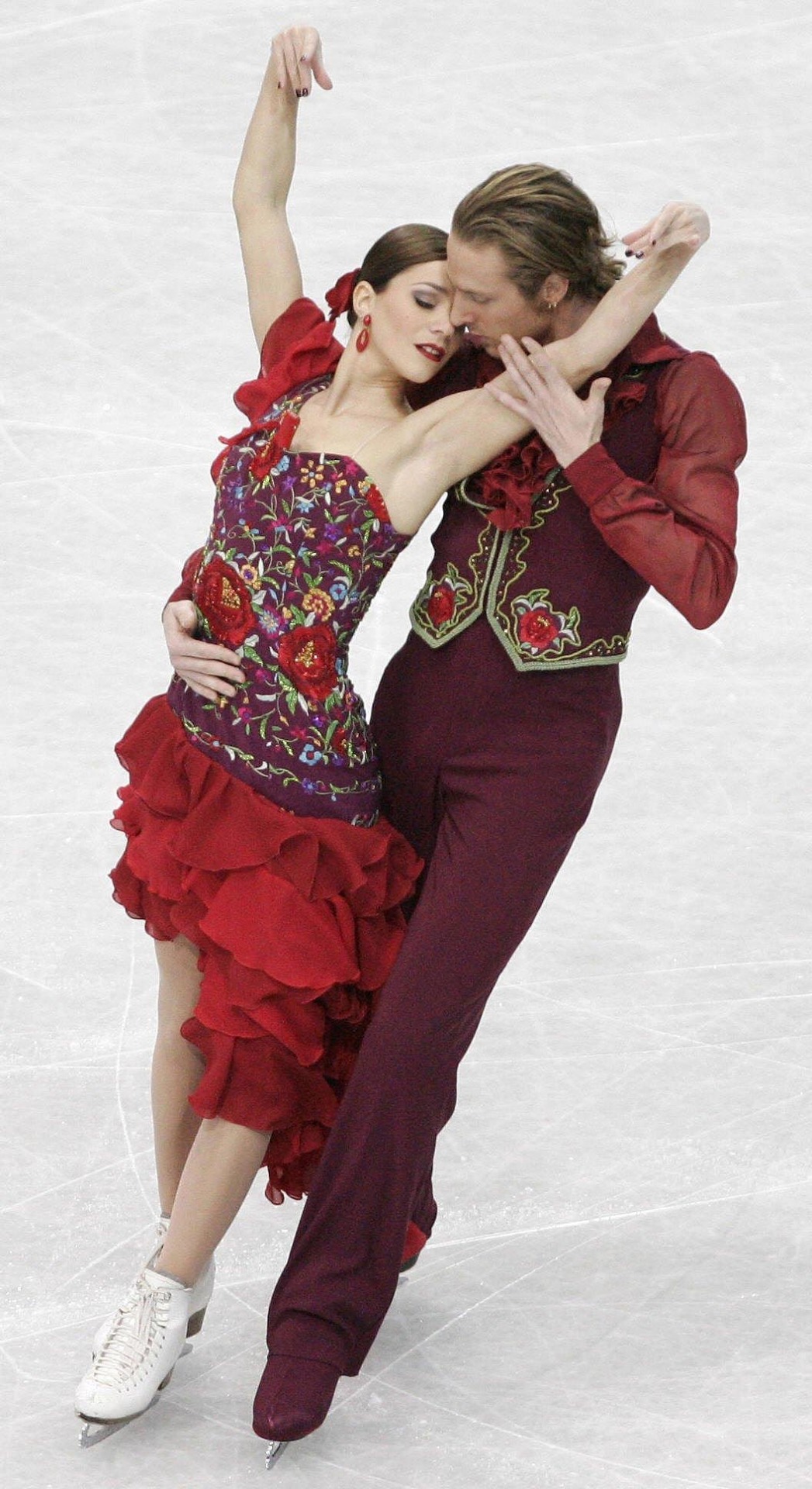

Nathalie Péchalat and Fabian Bourzat Original Dance “Flamenco” 2008. Photographed by Joe Klamar and Yuri Kadobnov.
78 notes
·
View notes
Note
Wait a second. I knew that there were two CDs per season when they existed and you had to know both going into competition with very little notice. And I know the beats/tempo needed to be the same for every dance (like every Tango was the same tempo) but teams didn’t get to pick their own music?! So Tessa and Scott didn’t pick that Tango Romantica music in 2010?! This is shocking to me even though I guess logically it works…
at the Vancouver Olympics, Tessa and Scott skated last in the CD - they were the 4th team to skate in their group, so they skated to what i'm calling Tango #4. all the other teams who skated 4th in their groups (including Allison Reed and her former partner, Khokhlova/Novitski and the Zaretskys) also skated to this one
the teams who skated 1st in their group got Tango #1: Delobel/Schoenfelder, Capellini/Lanotte, Belbin/Agosto, Pechalat/Bourzat --
Meryl/Charlie, Paul Poirier with his former partner Vanessa Crone, Faiella/Scali, Coomes/Buckland -- Tango #2
Cathy & Chris Reed, Emily Samuelson/Evan Bates, the Kerrs, Domnina/Shabalin -- Tango #3
all 4 pieces are cut so there's an intro and another 4 bars for them to get to the designated spot at the left of the judges to start the Tango Romantica pattern. and the tracks are all slightly longer than it takes to skate 2 full patterns, so you notice there's no full stop ending - it kind of fades out as the teams finish
so not only were teams expected to train two contrasting compulsories each season, they also needed to be musically aware and flexible enough to skate to different tracks exemplifying that dance - they couldn't just memorize one track, they ideally had to understand something of the essence of the dance. a lot of the criteria that are supposed to be evaluated in current PCS judging were being tested in reality in CDs
#back then there were only 4 teams per group#i guess the idea was no 2 teams in a group would skate to the same music
6 notes
·
View notes
Note
when an announcer says "X's partner skills/partnering are/is exceptional" what does that mean, and does it always refer to the male partner?
Q #200:
Hi anon,
Awesome question. Partnering/partner skills refer to one of two things:
1. The ability to actually skate with your partner as opposed to simply existing on the ice at the same time. Refers to both the chemistry and projection between the two skaters to the audience as an entity and also important factors of spatial awareness in hold and when physically interacting with each other. The ability to anticipate what the other is doing and matching one another’s movement.
2. The ability of the male skater to “present” his partner according to the traditional lens of skating which falls under the very gender-role “woman is the flower and man is the stem holding her up.” There’s also the “lady is the picture and the man is framing her” schtick. This is all in accordance to the kind of very typical old, ice dance style where the woman is kind of held like a rag doll and told to hit pretty positions while emoting to the audience and the man does the skating and lifts her. Some retired teams that really fit this mold would be Dubreil/Lauzon, Khoklova/Novitski, Drobiazko/Vanagas. In this more gendered, traditional, reductive case the “partnering” would only refer to the man.
Skaters who are “bad” at partnering typically are skating like singles skaters either physically (not knowing how to interact with their partner, awkwardly doing choreography that requires holds and changes of position, maybe most importantly not knowing how to maneuver their partner safely during elements when something goes wrong) or emoting to the audience that way. Some of the 3 person rhumba patterns and partner swap exercises that Gadbois does are a really good example of which dancers have the best “partnering” skills, I would say Madi Hubbell is one of the best either leading or following. One of the most important developments in ice dance as skaters have sunk into IJS more has been more strength and “partnering” by women in lifts and taking more active roles in elements than simply hitting the splits. Even teams that have portrayed very traditional, romantic image are doing it in a more balanced physical manner where both partners are doing equal technical difficulty and are structuring their programs to be far more intricate than the traditional “picture and framing partner.”
Sometimes commentators try and “code” stupid comments about teams who don’t present as romantically as bad at partnering but some very heteronormative teams don’t excel at it (Nikita Katsalapov, Bobrova/Soloviev) and teams who are openly queer (Manta/Johnson) or who pursued very different storylines (Pechalat/Bourzat, the Kerrs, the Duchesnays, Delobel/Schoenfelder) who are very in tune both in terms of physical unison and projection.
Hope that answers your question!
12 notes
·
View notes
Text
Figure skating: Best costumes, Ice dance edition
#cappellini lannotte#figure skating#ice dance#davis white#virtue moir#maia shibutani#shib sibs#pechalat bourzat#hubbell donohue#chock bates#papadakis cizeron#gilles poirier#hurtado khalliavin
2 notes
·
View notes
Photo
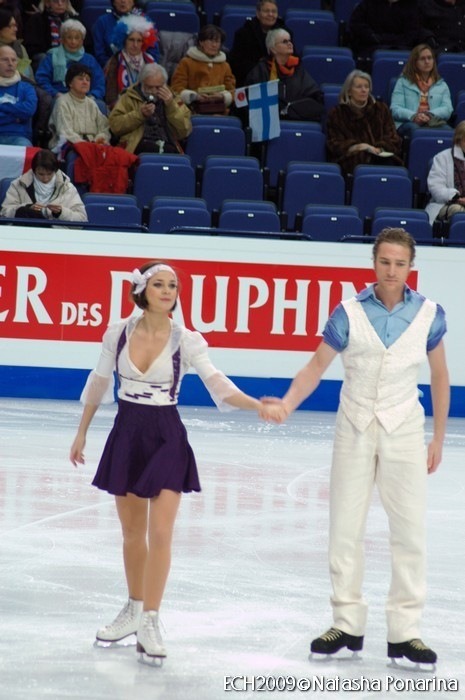
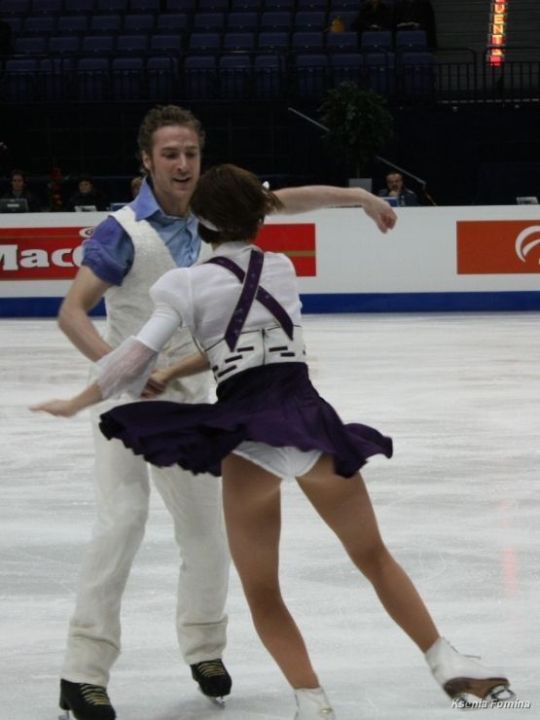

Nathalie Péchalat and Fabian Bourzat's Lindy Hop original dance costumes at the 2009 European Championships.
(Sources: 1, 2 and 3)
#Nathalie Pechalat#Fabian Bourzat#Pechalat Bourzat#Lindy Hop#Ice dance#Figure skating#France#2008–2009#2009 Europeans#Waistcoat#Hair accessory
5 notes
·
View notes
Photo
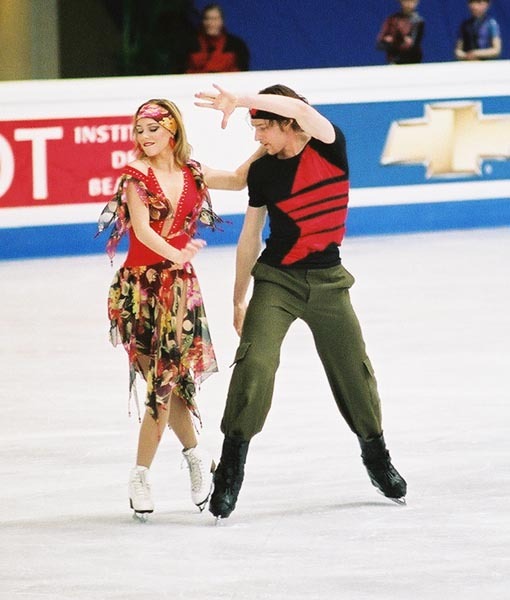
Worlds 2004
source
11 notes
·
View notes
Photo
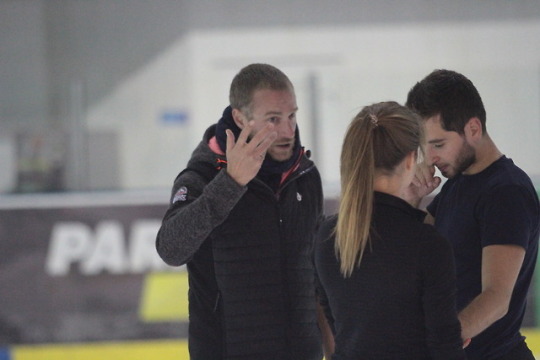
Here is a new interview with Fabian Bourzat made by Ukrainian “Segodnya” (you can find a version in Russian here: https://www.segodnya.ua/…/francuzskaya-zvezda-figurnogo-kat…)!
Fabian Bourzat: “I don’t like sad people, they make me sad”
The French figure skating star talks about going solo in coaching, working with Ukrainians Nazarova and Nikitin, a possible collaboration with Nathalie Pechalat, and meeting Jean Dujardin, remembering Denis Ten, learning to let go, and also about his shoes and favourite programs and costumes.
– How did you decide to come to Ukraine with Sasha and Maxim? – We’ve worked together in Detroit for like three years. It’s a very interesting team, I love working with them. Their quality matches my vision of skating. They’re creative and original. They have a lot of flaws, but they want to bring something different to skating. And that’s what I love about them. So, when I quit my job in the US, they told me that they were moving back to Ukraine and they needed someone to get them ready for the season. I was on vacation at that time and said, “Why not”. And here I am.
– Do you want to go solo from now on? – I don’t know exactly what I’m going to do next year yet. But I don’t want to work with somebody else anymore. I think it’s time for me to choose my own path and not follow somebody else’s. I’ve done that for almost four years. It was interesting for me to work with Igor Shpilband, I’ve learned a lot, and I thank him for that. But right now I need to express myself way more through my teaching. So, I’m going to come back to France and try to develop what I can over there.
– Do you want to open your own school? – Yeah, that would be ideal. It’s difficult to find a full-time ice rink in France. Most people there work as freelancers, they work in camps and go back and forth between different places. If I can find an ice rink, yes, I will build a school. Right now I’m working with Sasha and Maxim. I don’t know what will happen in the next few months. But I would welcome them on my team. I also want to bring young skaters and help them grow, to make skating in France more competitive. We have a good history of ice dance in Europe. Right now it’s moving a little more to USA and Canada, and I want to bring it back to Europe.
– You’ve been to different countries. What difference do you see in the perception of skating? – In the US, it’s more competitive from the young age, and it’s something we don’t have in Europe. Here we’re trying to go to school first and then think about sports. And I want to try to balance that.
– You’ve worked with Shpilband both as a student and as a coaching partner. What have you learned from him? – When I was still skating, I loved the way he worked, because he gave me the opportunity to enjoy figure skating again. At some point of your career you start thinking only about competition, performing and results and you’re not enjoying yourself anymore. That’s what he brought me as a coach. As a partner, he has a strong work ethic, he is good at scheduling everything and handling a massive amount of work outside of skating. The structure, as well as the techniques, was really helpful for me. As a skater, I used to work with Alexander Zhulin in Russia, Muriel Zazoui in France, Anjelika Krylova and Pasquale Camerlengo in the US. They’ve all given me so much, and I was able to decide what I wanted to take from them and what I did not, depending on which kind of skater I wanted to be and which skills I needed for that. I think growing around so many coaches helped me to develop a different way of skating, and that’s what I want to give back to the kids right now.
– Is it your first time in Ukraine? What are your impressions? – Yes, it’s actually my first time. It’s really hot! Sasha and Maxim took me to so many different places, but I haven’t seen much of the city. For me, seeing different countries and the way people live is always a different way of approaching life... I love the food here. We had pelmeni, khachapuri, which is Georgian actually, we ate shashlik, cornichons. Borsch? I’m not a big fan of that. But there is a summer soup that Maxim wants me to try. We’ve also got pâté from my mom. The country is welcoming. It’s also because the guys make me feel welcome.
– How about our figure skating? Anything unusual? – There are lots of kids on the ice. I’m actually surprised there are so many boys. It’s difficult to find boys in figure skating. The more people you have to train, the easier it will be to develop something.
– Do you remember the first time you saw Sasha and Maxim? – It was at the 2015 Junior Worlds, the year they were third. I remember that I told Igor Shpilband then that this couple was really interesting, that they were trying to bring something more creative, which is difficult at the young age. They kind of matched the same way I did with my partner at the time, so I was really impressed of their work.
– You said they have flaws. Which exactly? – Well, they need to work a little more on the connection and the feel of the motion. They are powerful skaters with a lot of strength. They are able to get a lift of any kind of difficulty done. I’m here to teach them a different approach of skating, and I think it’s starting to grow into them. They are hard workers, they listen, they follow exactly what I say. I know it’s not easy, but they are committed and they want to succeed. How do we polish their twizzles? That’s my secret.
– What’s the most difficult part of coaching? – I think it’s managing different types of people. You can have young kids, teenagers or adults. And you need to be able to push them without breaking them. Managing and planning is still brand new for me, I need to keep learning.
– The Olympic season was quite rocky for Sasha and Maxim. You had some painful moments in your career yourself. How do you teach them to overcome those difficulties, to let it go? – That’s the exact process. They need to let it go and move forward. Because it doesn’t matter how many times you fall, what’s important is the way you’re going to come back on the ice and step up after that. They have really good skills and they need to be proud of it. Every big champion has made mistakes in their life. Some more than the others. You just need to swallow it, get your shit together and move on.
– How much time did it take for you to move on? For example, from the 2014, which was quite intense. – I don’t know, I don’t know… You just need to completely switch your head and keep going. It doesn’t matter, it’s not going to change. You can’t talk about the past forever, you just need to learn and forget.
– Do you get in touch with your former partner Nathalie now? – Yeah. She’s actually working in France. The fact that I’m going back there makes us get more and more in touch. I was talking to her like yesterday. We’ve never got along as good as now. I’d like her to come and work with me. I know her skills and what she’s able to do. I don’t think she’s ready to work full-time and I’m not sure I’m ready to work full-time with her, but it would be nice to have her input from time to time.
– What was the last time you met her? – At her wedding in May. It was nice, not too many people. It was emotional. She was crying, of course.
– Everyone’s probably asking you about her husband, the Oscar-winning actor Jean Dujardin. How is he like in real life? – He’s actually a really nice guy. I’ve met him a couple of times. And the more you see him, the less you see the actor and more, the person. I cannot say we bonded as friends, but I definitely understand what she sees in him. If he makes her happy, that makes me happy.
– Do you have a favourite program from your competitive career? – There were so many of them! The Circus program was really nice, also Cats, which was a long-long time ago, the flamenco program that we did with Antonio Najarro, Four Seasons. Mostly because we met and bonded with different people who choreographed for us. The Little Prince? It was not our masterpiece, more like a patchwork of what we did before. A part of Circus and Chaplin in the emotions, a part of Cats because of the storyline. It was a reminder of everything that we did throughout our career.
– Do you miss skating? – No. Why? I’m way older now. Skating is difficult on the body. The run-throughs, that’s what I don’t miss. I feel comfortable as a coach. I was listening to others for so many years, and I think giving is so much easier. Shows? We didn’t do that many with Nathalie, because I moved on to coaching right away. For me, the competitive career was the most interesting, because you were trying your best. When you skate in shows, you do everything for the audience, which is interesting, but you’re not trying to polish your skills, to evolve as a better skater. That’s what I didn’t like that much in shows.
– You were known for some iconic costumes. Which was your favourite or the craziest one? – Circus. Because of changing the costume in the middle of the program. And probably Cats.
– A few weeks ago we found out about the death of Denis Ten. There are different projects being made in his memory in Kazakhstan. Do you know if the international skating community plans on doing something in his memory, too? – I have no idea. For me, he was a friend, a great champion, he was a warm person. I think it’s really sad, and I give all my support to his mom. These are difficult times for her, I can’t imagine what it’s like to lose a child. And for Kazakhstan, too. They’ve lost one of the iconic figures and one of the most important people in the country. It’s a tragedy. If I have the opportunity to get involved in some kind of a memorial, I will definitely do that. But for me, to show all these emotions on the social media is not a way to pay tribute to him. The best way is to remember him and to try to be more like him, to be honest, always smiling and trying the best. He got a roller coaster in his life. He was on the top and then he got some difficulties in training and results, but he still fought back. And that’s something we need to remember him for.
– Was there anyone you looked up to? – It wasn’t one person. Because nobody’s flawless. More like qualities from a certain person. What I always notice in people, is if they’re smiling. I don’t like sad people, they make me sad. And I like fighters, like Denis.
– We’ve already talked about your costumes on ice, but you’re also known as a very stylish person outside the rink. How big is your collection of accessories? – Oh-h, I have a lot of shoes, like… a lot of shoes. Thirty or forty maybe. I like to dress differently when I can. When you’re French, you need to be haute couture. I also wear Italian costumes and Japanese shoes. Whatever I like, I just wear it. If people don’t like it, I don’t care.
– Do you watch football? – Sometimes, but I did watch the World Cup. I saw the final with Maxim. I told him, if he wanted to come he’d better root for France. I don’t watch football for football, it’s more about the company. And here, in Ukraine, we went to see Shakhtar Donetsk vs Arsenal Kyiv. Good game. Not that many Ukrainians on the teams though.
– And what about tennis? Have you ever been to Roland Garros? – I did once, a long time ago. I’m not so much into watching sports, I like to do sports myself, to play tennis, do outdoor sports like beach volleyball. I always loved skating on the ice, but after that I just wanted to go home and hide. Because of how media broadcasted everything. And if you’re on the court as a tennis player, for example, you have people who are going to cheer for one and root against the other. I don’t like this state of mind. Most of them are trying their best, and you need to cheer for both.
– Is it not like that in figure skating? There are some hardcore fans… – Not that much. But yes, there are always those kinds of fans. I saw those in Russia, in Sochi. When we were at the Worlds in Nice, the audience cheered for us more than for the others, but they were also cheering for everyone else they loved. It’s the same way in Japan. It depends on the people. That’s why I don’t like to be in the crowd all the time so I don’t have to see what people are like.
– What are your passions beside skating and shoes? – I love arts. I love to play videogames with my nephew. I have a dog. My passions are my family, my girlfriend, my people.
– To wrap it up, what are your goals for the near future? – I want Europe to be back strong again in figure skating. And I want to leave legacy as a coach and have someone who’s going to follow me up at my job and improve it so we could build a European style that will be recognized all across the world.
Kateryna Makarevska for Segodnya
Photo: Sergey Revera (Segodnya)
Source: https://www.facebook.com/kateryna.makarevska/posts/1782547921810355
#fabian bourzat#figure skating#nathalie pechalat#aleksandra nazarova#maxim nikitin#igor shpilband#alexandra nazarova#maksim nikitin#ukraine#france#denis ten#jean dujardin
29 notes
·
View notes
Text
Nathalie Pechalat and Fabian Bourzat, Torino Olympics 2006

It is my eternal regret that I wasn’t watching ice dance in 2006, for so many reasons. One of them being that I only just discovered this a few weeks ago.

FAKE GUNPOWDER STAINS, FAKE BLOOD STAINS.
IT’S TO LES MISERABLES.
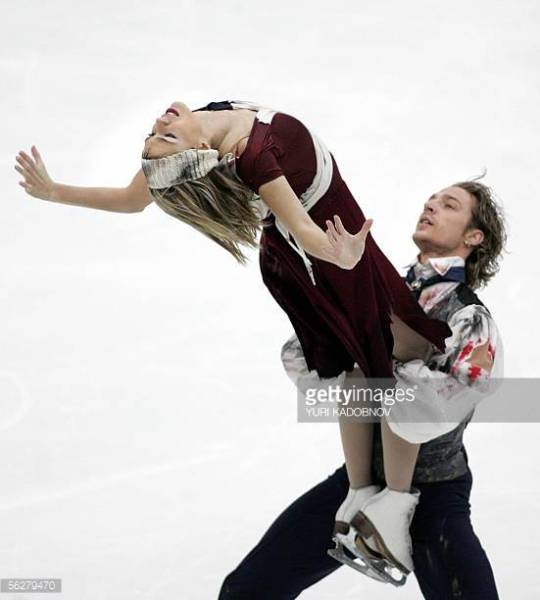
I mean holy shit, that’s commitment. It’s not pretty in the slightest, but you have to admire them just a bit for going “IT’S CALLED THE MISERABLE, WE WANT TO LOOK MISERABLE AND LIKE WE’VE JUST BEEN THROUGH A FAILED REVOLUTION”, don’t you?
Grade: B++ for sheer commitment to a theme. It’s crazy, it’s kind of ugly, but it’s what they wanted to be, I think. Although I have lingering questions about Nathalie’s head wrap.
2K notes
·
View notes
Photo

2018 Winter Olympics inspired: Ice Dancers Kaminari Denki and Ashido Mina
#kaminari denki#mina ashido#bnha#mha#olympic series#so i'm gonna continue doing these no matter how they turn out lmao#i thought this was cute ! dunno what they're dancing to tho#maybe what pechalat n bourzat did in 2014 for the free ? idk#ah well#my doobs#so it's still the first day of the new year here so happy new year's day to all yall again#also fucc hands idk how to do em *shrug*
15 notes
·
View notes
Note
I really like watching close hold programs, other than VM, can you name others I can watch that do this? I’m afraid I already watched all the VM programs lol 🤣🥲😅
Hello! So basically, any programs from 2002-2014 you are going to get get programs which have mandatory close hold step sequences, I personally don't really enjoy the skating/style from around 2002-2006, and I think the most interesting programs and best skating was happening 2008-2014. So, if I were you I'd maybe go watch the final groups at worlds from those years, see what you like the best, or watch a grand prix final of ice dance from that time period, something along those lines.
I was personally always a big fan of Pechalat and Bourzat, they always had fun and interesting programs, Coomes and Buckland had some fun programs, Cappellini and Lanotte are always a jam, you could watch their Carmen, they did it the same year as Tessa and Scott, which was also the first year after Marina and Igor had split (they were coached by Igor), which was some fun drama. Piper and Paul's Alfred Hitchcock program is a favourite, there was a low level team that had the greatest zombie free dance of all time, it was Nelli Zhiganshina and Alexander Gazsi, check it out, it's wild and so fun.
Hope that's all good enough to get you started! Enjoy!
7 notes
·
View notes
Photo

“Upon rewatching Ilinykh/Katasalapov and Pechalat/Bourzat's free dances at Sochi, I feel kind of underwhelmed by I/K. In hindsight, I think P/B deserved to win, but the crowd and the judges were on I/K's side that night. I still loved I/K's performance (I jumped up and down when they did their ending pose in 2014), but with a clearer mind, I choose P/B.”
#figure skating#ice dance#pechalat and bourzat#ilinykh and katsalapov#nathalie pechalat#fabian bourzat#elena ilinykh#nikita katsalapov#2014 olympics#olympics#2013/2014 season#judging#france#team russia
23 notes
·
View notes
Text


15 notes
·
View notes
Photo
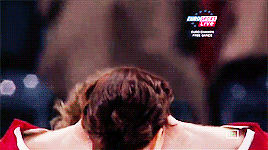
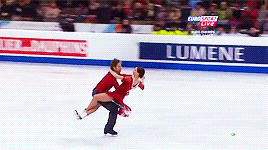


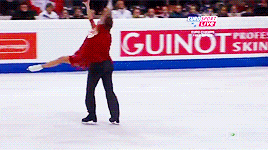
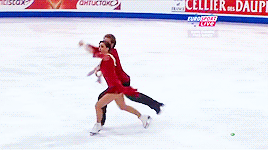
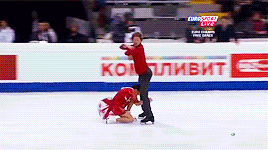
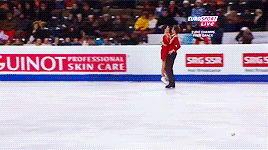


Nathalie Péchalat & Fabian Bouzat, City Lights || European Championships 2011
93 notes
·
View notes
Text
Q #186: “I feel like in the rd there wasn’t much close in holds.”
Hi anon,
I agree, for a Latin themed season we have really seen a lot of open skating. I think even more importantly, we’ve barely seen changes in hold which are such an important characteristic in the vast majority of Latin rhythms.

And I am not necessarily talking about formal changes of holds (killian to tango or reverse foxtrot to waltz) but even just changes in position and more complex hand-in-hand holds are really absent from most choreography this year.

We see a lot of “New Yorker” Cha Cha steps (like below) translated onto the ice pretty well because the sideways hip action and rotation is used to actually travel in the skating direction of motion.


The choreographic intricacies missing from many routines this year are what ties these basic latin steps into the skating—like the LFO C-step Scott does as he travels around Tessa while she twizzles. It’s not simply stopping for a Choreographic Rhythm Sequence to do a criss cross volta or bota foga because teams don’t feel comfortable translating those movements beyond stationary toe steps. From a personal perspective that’s been the most frustrating thing about the rationalization for the ChRS, because top teams should not need an element to include true Latin choreo in their programs and they especially shouldn’t need an element that permits multiple stops to do so.
The pattern has not been a limit on creativity for past teams because it can allow for such interesting transitions like we see Pechalat/Bourzat doing out of their rhumba above.
I hope we see the ISU return to a step sequence element, whether that be a pattern or not, next season because the quintessential part of the rhythm dance for me is watching a dance get translated onto the ice. The whole new dimension of movement that skating allows for is what makes ice dance as a discipline compelling, and the ways in which skaters can incorporate difficulty into their on-ice translation is what makes the sport what it is. Because for me, if I wanted to watch stationary dancing I would watch DWTS or Strictly, not ice dancers stopping to do an imitation of ballroom dancing while walking across the ice in skates.
14 notes
·
View notes
Photo
nathfab:
*-*

#nathalie pechalat#fabian bourzat#pechalat and bourzat#season: 2007 2008#team france#retired#throwback!
19 notes
·
View notes
Photo

Folk dance watchpost
Yes, the folk rhythm dance next season is not happening, we’ll see (fingers crossed) the repeat of this year’s theme (and probably all already existing programs). But let’s take a look at the folk dances anyway - in my opinion, it was one of the most interesting ideas for ice dance as it provided some great entertainment and, when done right, led to very memorable programs. (Although when done wrong it also led to some incredibly cringey moments.)
Folk happened first in 2008 and, after its big success, was brought back for the Olympic season in 2010.
2008
Delobel & Schoenfelder - Breton Gavotte
Virtue & Moir - Dark Eyes
Khokhlova & Novitski - Two Guitars
Belbin & Agosto - Cotton Eyed Joe
Faiella & Scali - Pizzica
Davis & White - Kalinka
Pechalat & Bourzat - Flamenco
Kerr & Kerr - Auld Lang Syne (one of my all time favorite ice dance programs)
Alexandra Zaretski & Roman Zaretski - Shich, Shack, Shock
Cappellini & Lanotte - Bubamara
Bobrova & Soloviev - Kalinka
Weaver & Poje - Road to Vladivostok
Some programs from then-juniors:
Samuelson & Bates - Kalinka
Crone & Poirier - Blue Kerchief
Hubbell & Hubbell - Schuhplattler
Shibutani & Shibutani - Kobo music
2010
Virtue & Moir - Farrucas
Davis & White - Indian Folk Dance
Faiella & Scali - Tammurriata Nera
Domnina & Shabalin - Aboriginal Dance (I mean, let’s not forget this infamous program; today it woud probably get so much backlash they would’ve had to change it)
Delobel & Schoenfelder - Can Can
Pechalat & Bourzat - Thank God, I'm a country boy
Kerr & Kerr - I've been everywhere
Zaretsky & Zaretsky - Hava Nagila
Crone & Poirier - Flamenco
Khokhlova & Novitski - Vdol po Piterskoi
Bobrova & Soloviev - Yablochko
Samuelson & Bates - Dixie Chicks Medley (pretty sure (actually not, I’m just joking:)) there was a competition for the shortest shorts in a country dance that year)
Hoffmann & Zavozin - Hungarian Folk Dance
Belbin & Agosto - Moldovanesca
Cappellini & Lanotte - Torna a Surriento
Reed & Reed - Japanese Folk Dance
Katelyn Goode & Nikolaj Sorenen - Danish Folk Dance
Weaver & Poje - Flamenco
Chock & Zuerlein - Afro-Cubal Dance (another dance that wouldn’t fly today - he’s a colonizer in it?)
Hubbell & Hubbell - Ukrainian Folk Dance
Coomes & Buckland - Irish Folk Dance
Juniors
Ilihykh & Katsalapov - Sikuriadas
Gilles & Donohue - Flamenco
Paul & Islam - Flamenco
Monko & Khaliavin - Ukrainian Folk Dance
Shibutani & Shibutani - Japanese Folk Dance
89 notes
·
View notes